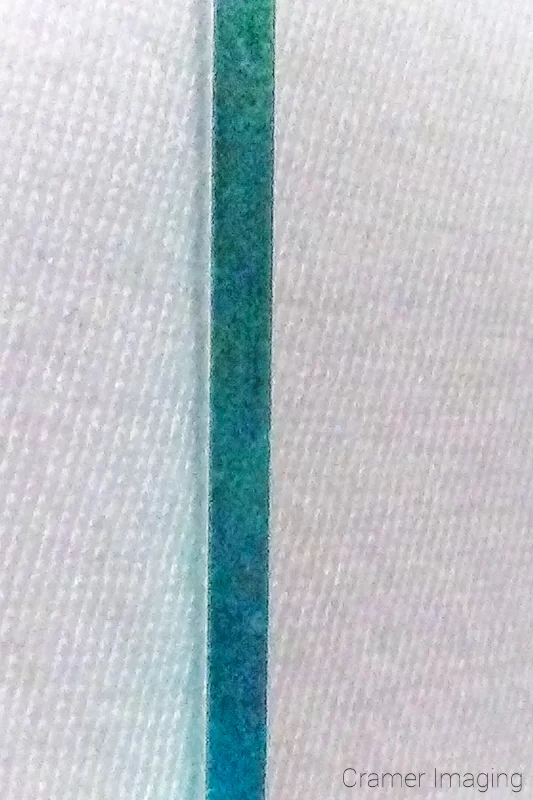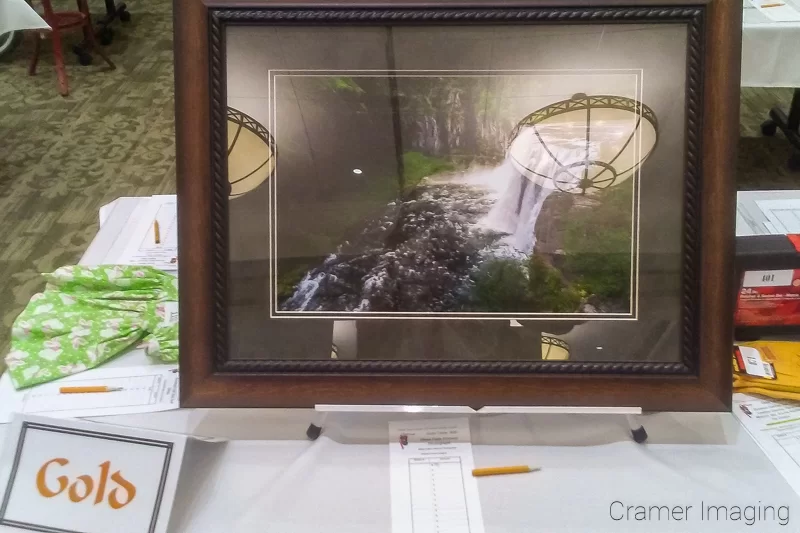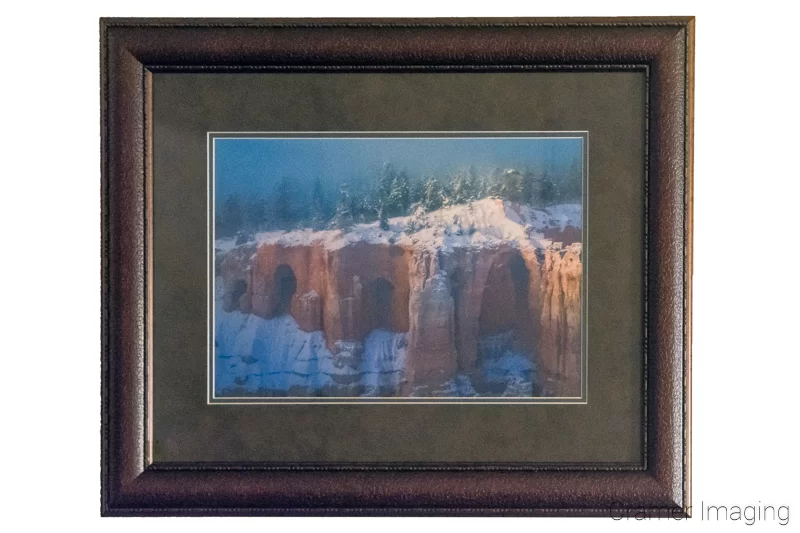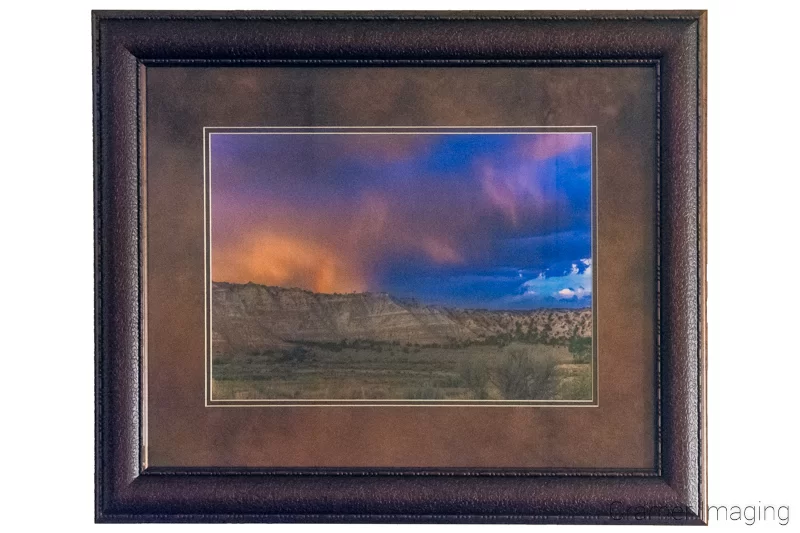If you’re looking to get a piece of art framed, you might run across the term “Museum Glass®,” “Museum Quality Glass,” or sometimes “Conversation quality glass” listed as an upgrade option for glazing (or the glass you get when you have something framed). So, what is “museum quality” glass? What does the term mean? Do you need it? Is it worth the money for the “upgrade?” Today, that’s what we’re talking about.

Definition
To start, the term “Museum Glass®” is a registered trademark from the company Tru View. They have a specific definition of what constitutes “Museum Glass®.” Thanks to the fact that the term is trademarked, no one else can use it without permission or refering to their specific product. Those looking to create something similar, but not pay the trademark violation penalties, had to come up with a different term for their products. The term they came up with is “museum quality glass.”
Now, “museum quality glass” is unregulated. Anyone can call pretty much any kind of glass “museum quality glass” and they wouldn’t be wrong. Thanks to this lack of regulation or standards, anyone can slap the term on packaging with no issues. “Museum quality glass” is a lot like the word “natural.” People have a general idea of what “natural” is supposed to mean, however, companies don’t always follow the generally understood attributes of the term. The same is true with this glass moniker.
What is “Museum Quality Glass?”

Regular glass cheap glass has a fairly high iron content. This gives it a greenish cast. You can’t easily see the green tone when looking through it but, looking at the edge, you can see the green clearly. Most house and car windows use this kind of glass. Regular glass is clear enough that you pretty much don’t notice the green but, for fine art, it can alter the colors a little bit.
The so called “museum quality glass” usually has a lower iron content making it more transparent. It also often has one or more special coatings or additions to help enhance or protect the artwork underneath.
The first coating is a ultraviolet (UV) blocker. This helps keep the work from fading when exposed to light. While direct sunlight is the worst for this, even incandescent, fluorescent and LED light can produce some UV, so some UV filtration is good.
The second common coating added is an anti-glare coating. This coating usually adds some kind of very fine texture to the outside of the glass preventing it from reflecting light as badly as regular glass does. Depending on the exact method of providing anti-glare, it can blur the image slightly. However, most people can’t really tell the difference so the choice is up to you.

As you shop around, you may find other coatings available on that moniker. However, these are the two most common coatings you will find on the market today.
Is It Worth the “Upgrade?”
The final question for the day is whether or not “museum quality glass” is worth the money. Thanks to the marketing term, you can expect that this fancier glass will have a higher price tag attached to it. After all, those coatings don’t attach themselves for free.
If you have an expensive or other form of high-end piece of fine art, including fine art photography, you should probably consider going with the “upgrade.” If you have a piece of fine art with high sentimental (though perhaps not intrinsic) value, you should probably consider buying “museum quality” glass for displaying it behind. Thanks to the UV coating, you will be protecting your art better than with regular cheap glass.

If you are planning on displaying a cheap concert poster or other form of mass-produced piece of art, then you probably won’t want to consider “museum quality glass” to display it in. If the art isn’t worth the investment in better glass, don’t think about buying it.

Always consider what kind of value the art has before you go buying upgrades which aren’t worth the money.
Conclusion
Museum quality glass is mostly a marketing term. It’s sometimes used to say that the glass is higher quality than “normal”. It isn’t regulated so someone could easily pass off any glass of any reasonable quality as “museum quality”. However, generally it means glass of a greater clarity and with one or anti-glare, anti-uv coatings. It’s a kind of “upgrade” which you might consider for higher end or highly valued pieces of art.





